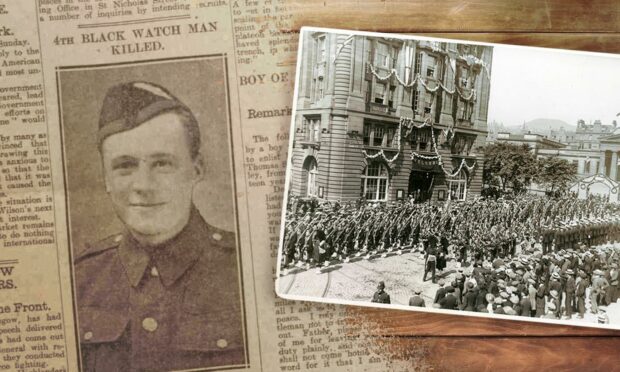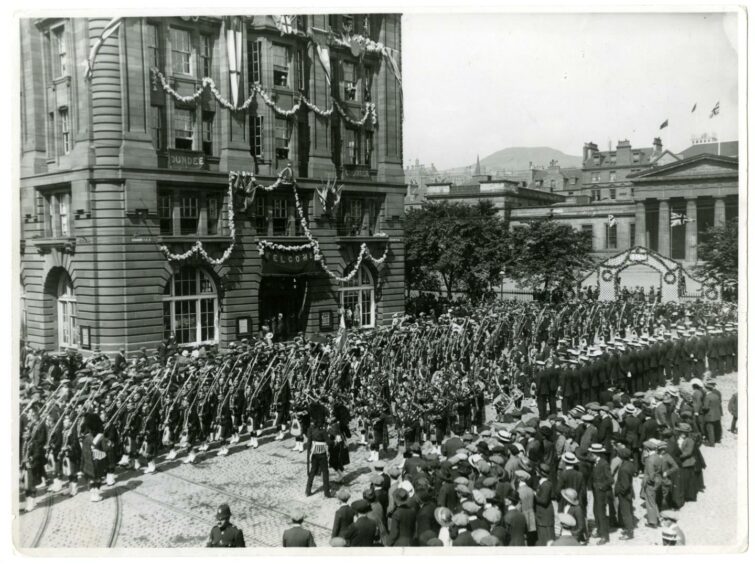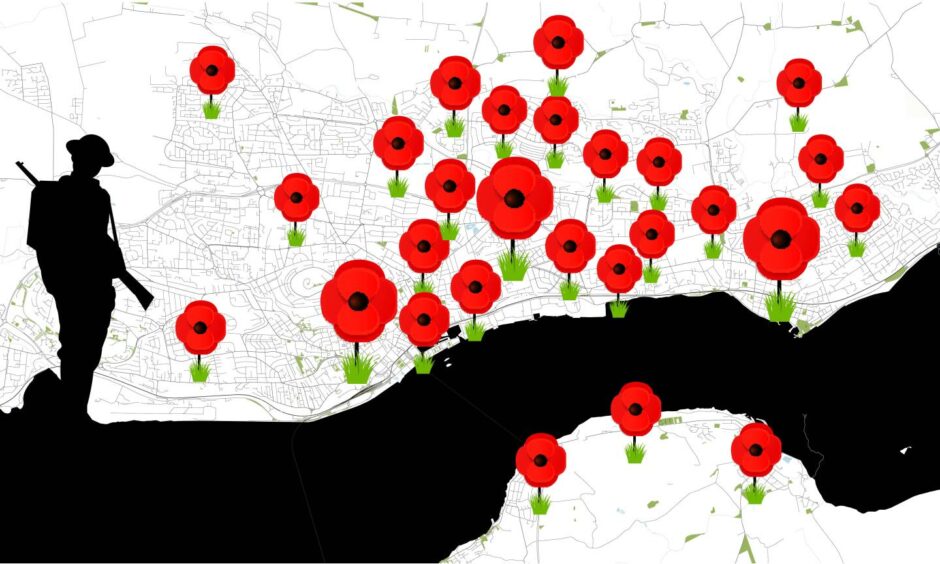The fate of Alexander Cameron Brown was typical of so many of the young men who joined the British military ranks at the start of the First World War and embarked on what they imagined would be a short, sharp conflict.
The young private, who answered his country’s patriotic call and enlisted with the Black Watch, had previously been a member of the artist staff at the office of the Dundee Courier.
His parents, Catherine and George Brown, who lived at Summerfield Place in Leith in Edinburgh had been proud of their son’s determination to pursue his artistic ambitions and encouraged him in his endeavours.
But they, in common with countless other families in every corner of the UK, were torn asunder when the hostilities started in 1914 and millions of young men across Britain switched from civvy street to the demands of military life and voluntarily flocked to the killing fields of France and Belgium.
Private Brown was amongst their number and, after joining the 4th Battalion of the Black Watch, soon found himself sailing to France, where he was transferred to another battalion.
The pictures of these youngsters who journeyed abroad with smiles on their faces – this was before news of the mass slaughter and appalling conditions in the trenches gradually filtered back to Blighty in the next two years – offers a poignant reflection of their innocence and devotion to the cause. Many had never left their homeland before. Many would never come back.
The great battle
Pte Brown, who had been put to work on trench mortar, was soon involved in the struggle, and sadly perished, aged 24, on Sunday May 9, in what his death notice described as “the great battle”, which could be a reference to the Second Battle of Artois or the Battle of Aubers Ridge, which both claimed grievous casualties on both sides as the fighting intensified.
His parents, at their home in Leith, were denied any opportunity to properly commemorate his son’s sacrifice. He has no known grave, but is remembered on Le Touret Memorial.
The latter site in Calais commemorates over 13,400 British soldiers who were killed in this sector of the Western Front from the beginning of October 1914 to the eve of the Battle of Loos in late September the following year.
Pte Brown’s parents’ mixture of pride and sadness was reflected in their poignant words – “His country called; he answered” – as they were reported in the Evening Telegraph and Post on Monday, May 31.
The Courier carried a brief piece on the same day which said: “Further casualties sustained by the 4th and 5th Black Watch during the terrible fighting on 9th May have been reported.
“In the ranks of the Regulars, hundreds of soldiers are playing their part nobly and more names have to be added to the ranks of the killed and wounded.”


